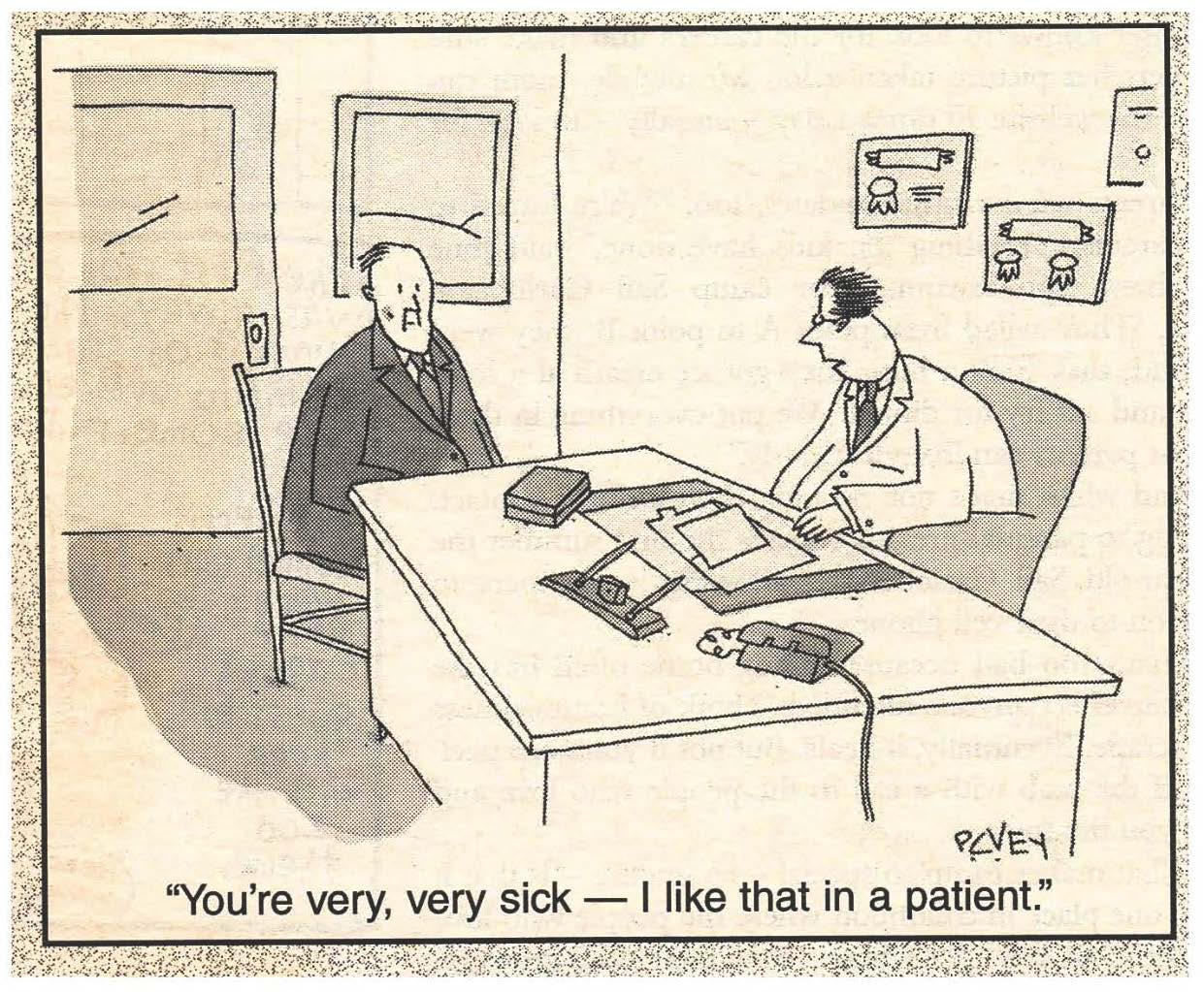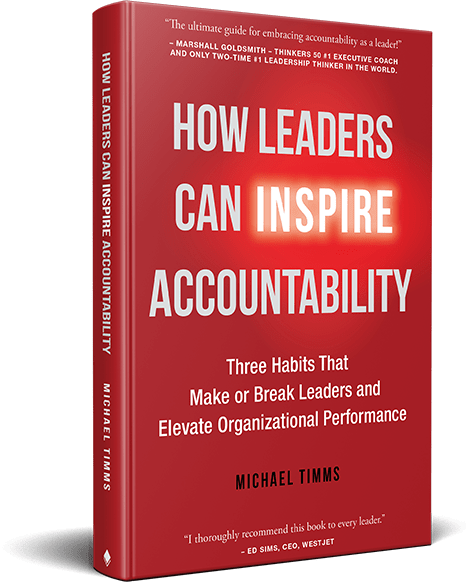
LEARN A LITTLE:
How’s Your Job Going?
It’s amazing how many people I have met during my career, who have shared the fact that they hate their job. I recently met a fellow in middle management, who told me, “I only have 14 more years, 3 months, 11 days and 15 minutes.” Then he looked at his watch and jokingly noted, “And 19 seconds to go.” I know he said it as a joke, but I could tell he really did not like his job and obviously felt trapped in his current employment situation.
Job haters are everywhere and in every known job title. Most of these people seem to live for the weekends, holidays and summer vacations. Still, others have chosen careers where they can get their summers off, even if they would rather be doing something else. I seriously feel bad when I meet these individuals, and perhaps a bit guilty, since I have enjoyed and actually feel blessed to have worked in jobs during my career that were challenging and rewarding. In fact, I started working while in the 9th grade at Sharp Tool and Die Molds in Racine, Wisconsin, and continued to work through high school and college.
Don’t get me wrong. I have worked quite a few jobs that I hated—mopping floors in a pancake house, where I stuck to the floor from all the spilled syrup, shoveling snow off significantly long sidewalks of an apartment complex when it was 10 degrees below zero, and vacuuming pool tables after midnight at Ed’s Billiards.
I think the key ingredient in job satisfaction is doing something that you find purposeful and gratifying, and that enhances your gratefulness. It’s not likely that high wages, a prestigious title or a corner office will satisfy you. Some people say that you can be “happy” in any job because it’s simply a decision you make. That has not been my experience. The truth is, I have probably met more people who hate their bosses than those who have hated their jobs.
If you approach life with a positive mindset, it is highly likely that you will be more satisfied with your job and life generally. Of course, the opposite is also true. If you are generally negative or pessimistic, you are unlikely to find a satisfying and enjoyable job. Having an enjoyable job is much more likely to occur if you accept the fact that you, like millions of other people, are likely to be working full time throughout your adult life.
My purpose in this blog is not to suggest 10 tips for enjoying your job or how to be happy at work. However, the idea of looking at our current employment situation from the perspective of choice makes sense to me. If we can choose our job, we’re probably more likely to enjoy it. But when there is no current alternative, we may have to work just to pay our bills and take care of our family. I have done that as well.
I think too many people stay in the “wrong jobs” for a number of reasons:
- They fear change.
- They don’t know what is or what would be satisfying to them.
- They would rather stay in their current venture, not have the hassle of worrying about finding another job. Some people are just gutting it out— whatever that means.
- They view themselves as victims.
- They spend all day with other people who also hate their jobs.
- They don’t make a plan for finding/having a satisfying job.
- They may not be disciplined enough to develop a plan to secure a more satisfying job.
As I began the blog, I am saddened by those who are just “putting in their time.” Here’s a thought that I appreciate. “Our present circumstances determine where we begin, not where we have to end.”
LAUGH A LITTLE:


REFLECT A LITTLE:

Proverbs 31:9 (ERV)
“Stand up for what you know is right, and judge all people fairly. Protect the rights of the poor and those who need help”
READ A LITTLE

How Leaders Can Inspire Accountability
Michael Timms
(Friesen Press, 2021)

Michael Timms has written an exceptional book that is a goldmine of insights regarding people, relationships and results. A leadership development consultant and well known author of Succession Planning That Works, he offers excellent advice to anyone interested in becoming better a leader. While easy to read, this is a book that has to be thought about and reflected on if your goal is to improve your leadership skills as well as those of employees within your organization. Resist the temptation to read through it as if you’re reading a novel.
Early on in the book, Timms makes the point that great leadership is not simply a collection of desirable personality traits; it emerges through identifying the necessary learned behaviors. The first few chapters discuss the principles of leadership, and the remainder of the book describes the three habits of personal accountability.
I am following this outline as I share the author’s insights and practical suggestions, while highlighting what I consider to be his most important observations to pique your interest and persuade you to read the book. I believe you will appreciate the wisdom found in its pages.

Examples of Leadership
“Accountability is about striving to achieve the right results. To get the right results, you have to focus on the results rather than merely completing tasks.”
This is a thought developed throughout the book. “When people care about the results they produce; we call them owners. In addition to taking ownership of results, accountability is about working to improve future results.”
Note: There is a valuable chart on pages 18 and 19 that lays out the fruits of low accountability compared to the fruits of high accountability.
An important construct: “Responsibility is taking ownership of activities. Accountability is taking ownership of results.”
“One of the hallmarks of accountability is the willingness to put the success of the team above personal interests or convenience.”
“Those in leadership positions set the upper limit on accountability for their organizations. Personal accountability is also a source of leadership power.”
“Organizations that are led by people who display low accountability usually suffer as a result.”
“Systems thinking is elevating our thinking to see the relationship between things that are separated by distance and time. How can you expect to solve your most difficult problems if you can’t see what’s causing them?”
“Systems thinking is simply a more enlightened way of looking at problems to discuss insights that would often remain undetected.”
“Whether you know it or not, whatever outcomes you receive, whether good or bad, there’s a good chance they are a result of the system.”
“Certain behaviors have a greater positive impact on people and results than other behaviors. It’s that simple.”
“You are only a leader when others willingly follow you because they trust and respect you, not because they fear the consequences of not doing so.”
“Management is a position. Leadership is how one chooses to influence others.”
“Leaders care as much about the people they lead as results.”
“True leaders know that the surest way to achieve organizational goals is first to meet the emotional needs of those they lead.”
The Litmus Test of Leadership: “Elevate others. Leaders elevate others by helping them discover and enhance their strengths, encouraging them to exercise their agency, and by building their confidence in their abilities. True leaders bring out the best in people and inspire positive change. Leaders mobilize others to realize a worthy goal that one person alone cannot achieve.
Habit 1: Don’t Blame
“Blame is perpetual negative energy that creates its own inertia because it causes a chain reaction.”
“Blame kills accountability. Instead of making fewer mistakes, people in ‘blame and shame’ cultures simply get better at hiding mistakes.”
“In a hierarchy, everybody looks up the food chain for cues on how to behave to improve their odds of achieving favorable outcomes.”
“Employees don’t create culture, and culture doesn’t ‘just happen.’ Those in positions of authority create the culture—intentionally or unwittingly—by how and what they indicate is important to them.” Note: Check out the table on page 70 in the book, it is very informative.
“There are basically two ways of explaining human-related problems: the person approach and the systems approach. The person approach views human errors as ‘arising primarily from aberrant mental processes, such as forgetfulness, inattention, poor motivation, carelessness, negligence, and recklessness. The premise of the systems approach is that human error is the consequence of bad systems. The systems approach acknowledges that human beings make mistakes and will always make mistakes. What we can do is change the conditions under which humans work.”
A real danger: “The fundamental attribution bias—that human beings tend to ascribe the cause of people’s actions to the actor’s personality traits rather than to external factors that may be influencing their behavior.”
A second danger: “The self-serving bias that we tend to attribute other’s failures to internal factors (they are stupid or lazy) and our own failures to external factors (the dog ate my homework).”
“Weak leaders ask, ‘Who’s at fault?’ Strong leaders ask, ‘Where did the process break down?’”
Habit 2: Look in the Mirror
“Only when you see how you are contributing to your own problems will you discover what you can do to improve your odds of getting better results in the future.”
An observation: “People who are constantly fighting fires are often the arsonists.”
“Confidence is essential to high performance.”
A research result, “Simply put, those who are the worst at something tend to overestimate their ability the most.”
Three reasons we may not be aware:
“1. We don’t get enough feedback.
- We think we are already self-aware.
- Power dynamics make it even harder to see ourselves clearly.”
Significant research finding: “Self-awareness is the single greatest predictor of leadership success.”
“Our desire to understand reality is not as strong as our desire to think highly of ourselves.” – Dr. Tomas Chamorro-Premuzic.
“The higher you climb, the less feedback you receive.”
“Self-awareness is the beginning of wisdom.”
“When things go wrong, ask, “How may I have contributed to this problem?”
“The difference between an excuse and an explanation is how you intend to use it.”
Habit 3: Engineer Solutions to Problems
“Changing other people is hard. Changing the process, the environment, or your own behaviors is far easier because you have much more control over them. This is what it means to engineer the solution.”
“Discipline is the practice of consistently doing things that bring about long-term benefits. Willpower is not the same thing as discipline. Discipline is about consistent behavior, whereas willpower is about impulse control.”
“Not all problems are systems problems, however. Some problems simply require people to own the results and come up with a creative solution.”
“Engineered solutions address the root cause of problems. Person-focused solutions simply hack at the branches.”
This chapter concludes with a rather long list of suggested “engineering solutions” too lengthy to list here. They are identified below.
- Creating standard operating procedures is an effective strategy.
- Prioritize visual transparency (feedback) in the engineered processes, such as whiteboards, etc.
- Use Key Performance Indicators (KPIs) that provide feedback regarding goal accomplishment.
- Provide relevant survey data.
- Use “Lessons learned” debriefing session.
- Checklists are often helpful in getting people the right results more frequently.
- Effective meetings, properly focused, can help achieve success.
- Have one-to-one meetings with staff.
- Use effective, agreed upon reminders.
- Ensure the fact that the most important activities are completed first.
- Design the environment.
“Leadership is not a position; it’s how we choose to influence others while striving to achieve results.”
